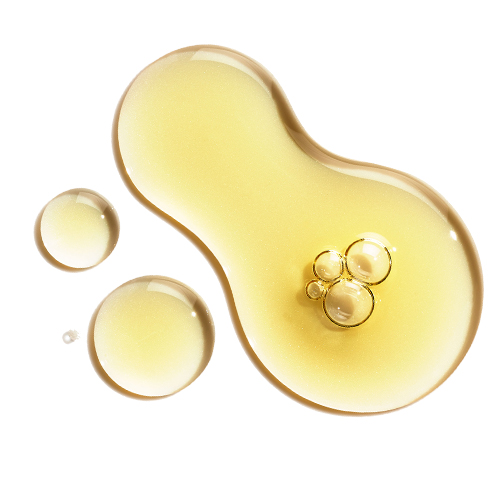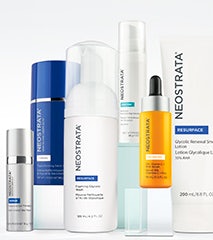Clinical Studies
Journal of Drugs and Dermatology publications
Schlessinger J, Green BA, Edison BL, Murphy L, Sabherwal Y. A firming neck cream containing N-acetyl glucosamine significantly improves signs of aging on the challenging neck and décolletage. J Drugs Dermatol 2016;15(1):47-52.
Farris PK, Edison BL, Weinkauf RL, Green BA. A novel, volumizing cosmetic formulation significantly improves the appearance of target glabellar lines, nasolabial folds and crow’s feet in a double-blind, vehicle-controlled clinical trial. J Drugs Dermatol 2014;13(1):41-46.
Farris PK, Edison BL, Brouda I, Weinkauf RL, Green BA. A high-potency, multimechanism skin care regimen provides significant antiaging effects: Results from a double-blind, vehicle-controlled clinical trial. J Drugs Dermatol 2012:11(12)1447-1454.
Akamine KL, Gustafson CJ, Yentzer BA, Edison BL, Green BA, Davis SA, Feldman SR. A double-blind, randomized clinical trial of 20% alpha/poly hydroxy acid cream to reduce scaling of lesions associated with moderate, chronic plaque psoriasis. J Drugs Dermatol 2013; 12(8):855-859.
Bagel J. LCD plus NB-UVB reduces time to improvement of psoriasis vs. NB-UVB alone. J Drugs Dermatol 2009;8(4):351-357.
Cosmetic Dermatology publications
Green BA, Edison BL, Sigler ML. Antiaging effects of topical lactobionic acid: results of a controlled usage study. Cosmetic Dermatology2008;21(2):76-82.
Green BA., Edison BL, Wildnauer RH, Sigler ML. Lactobionic acid and gluconolactone: PHAs for photoaged skin. Cosmetic Dermatology2001;14(9):24-28.
Journal of Cosmetic Dermatology publications
Johnson C, Edison BL, Brouda I, Green BA. A novel LCD (coal tar) solution for psoriasis does not discolor naturally light or color-processed hair in an exaggerated exposure test model. J Cosmet Dermatol 2009;8:211-215.
Draelos ZD, Green BA, Edison BL. An evaluation of a polyhydroxy acid skin care regimen in combination with azelaic acid 15% gel in rosacea patients. J Cosmet Dermatol 2006;5:23-29.
Green B. After 30 years…the future of hydroxyacids. J Cosmet Dermatol 2005;4:44-45.
Cutis publications
Effron C, Briden ME, Green BA. Enhancing cosmetic outcomes by combining superficial glycolic acid (AHA) peels with nonablative lasers, intense pulsed light, and trichloroacetic acid peels. Cutis 2007;79(suppl 1):4-8.
Edison BL, Green BA, Wildnauer RH, Sigler ML. A polyhydroxy acid skin care regimen provides antiaging effects comparable to an alpha-hydroxyacid regimen. Cutis 2004;73(suppl 2):14-17.
Grimes PE, Green BA, Wildnauer RH, Edison BL. The use of polyhydroxy acids (PHAs) in photoaged skin. Cutis2004;73(suppl 2):3-13.
Clinics in Dermatology publication
Green BA, Yu RJ, Van Scott EJ. Clinical and cosmeceutical uses of hydroxyacids. Clinics in Dermatol 2009;27:495-501.
British Journal of Dermatology publication
Berardesca E, Distante F, Vignoli GP, Oresajo J, Green B. Alpha hydroxyacids modulate stratum corneum barrier function. British Journal of Dermatology 1997;137:934-938.
Various Journal Publications
Green BA, Weinkauf RL. Powerful peptides. Body Language 2011; 13(6): 41.
Green BA. Hydroxyacids for anti-ageing skincare. Body Language 2011; 13(4): 50-51.
Green BA. Breakthroughs in peel technology. Healthy Aging 2006;1(5):80.
Green BA. What every esthetician should know about dry skin. Skin Inc. 2003;15(2):75-81.
Kraechter HU, McCaulley JA, Edison BL, Green BA, Milora DJ. Amphoteric hydroxy complexes: AHAs with reduced stinging and irritation. Cosmetics & Toiletries 2001;116(1):47-52.
Bernstein EF, Green BA, Edison B, Wildnauer RH. Poly hydroxy acids (PHAs): clinical uses for the next generation of hydroxy acids. Skin & Aging 2001;9(Suppl):4-11.
Green BA. Lactobionic acid. Skin Inc 2000;11:62-65.
Book Chapters
Green BA, Van Scott EJ, Yu RJ. Clinical uses of hydroxyacids. In: Draelos ZD ed. Cosmetic Dermatology: Products and Procedures, 2nd ed.West Sussex, UK: Wiley-Blackwell; 2016:346-356.
Green BA, Sabherwal Y. Antiaging benefit ingredients: AHAs, PHAs, and bionic acids. In: Draelos ZD, Dover J, Alam M, eds. Procedures in Cosmetic Dermatology: Cosmeceuticals, 3rd ed. London: Elsevier; 2016:99-116.
Green BA. Cosmeceutical Uses and Benefits of Alpha, Poly and Bionic Hydroxy Acids. In: Farris PK. ed. Cosmeceuticals and Cosmetic Practice.West Sussex, UK: Wiley-Blackwell; 2014:69-80.
Small R, Green B. Skin care products. In: Usatine et al, eds. Dermatologic and Cosmetic Procedures in Office Practice. Philadelphia, PA: Elsevier Saunders; 2012:286-297.
Green BA, Van Scott EJ, Yu RJ. Clinical uses of hydroxyacids. In: Draelos ZD ed. Cosmetic Dermatology: Products and Procedures, 1st ed.West Sussex, UK: Wiley-Blackwell 2010; 327-334.
Green BA, Briden ME. PHAs and bionic acids: next generation hydroxy acids. In: Draelos Z, Dover J, Alam M, eds. Procedures in Cosmetic Dermatology: Cosmeceuticals, 2nd edn. Philadelphia, PA: Saunders Elsevier; 2009:209-215.
Briden ME, Green BA. Topical exfoliation – clinical effects and formulating considerations. In: Draelos ZD, Thaman LA,eds. Cosmetic Formulations of Skin Care Products. New York, NY: Taylor & Francis Group; 2006:237-250.
Briden ME, Green BA. The next generation hydroxyacids. In: Draelos Z, Dover J, Alam M, eds. Procedures in Cosmetic Dermatology: Cosmeceuticals. Philadelphia, PA: Elsevier Saunders;2005:205-212.







